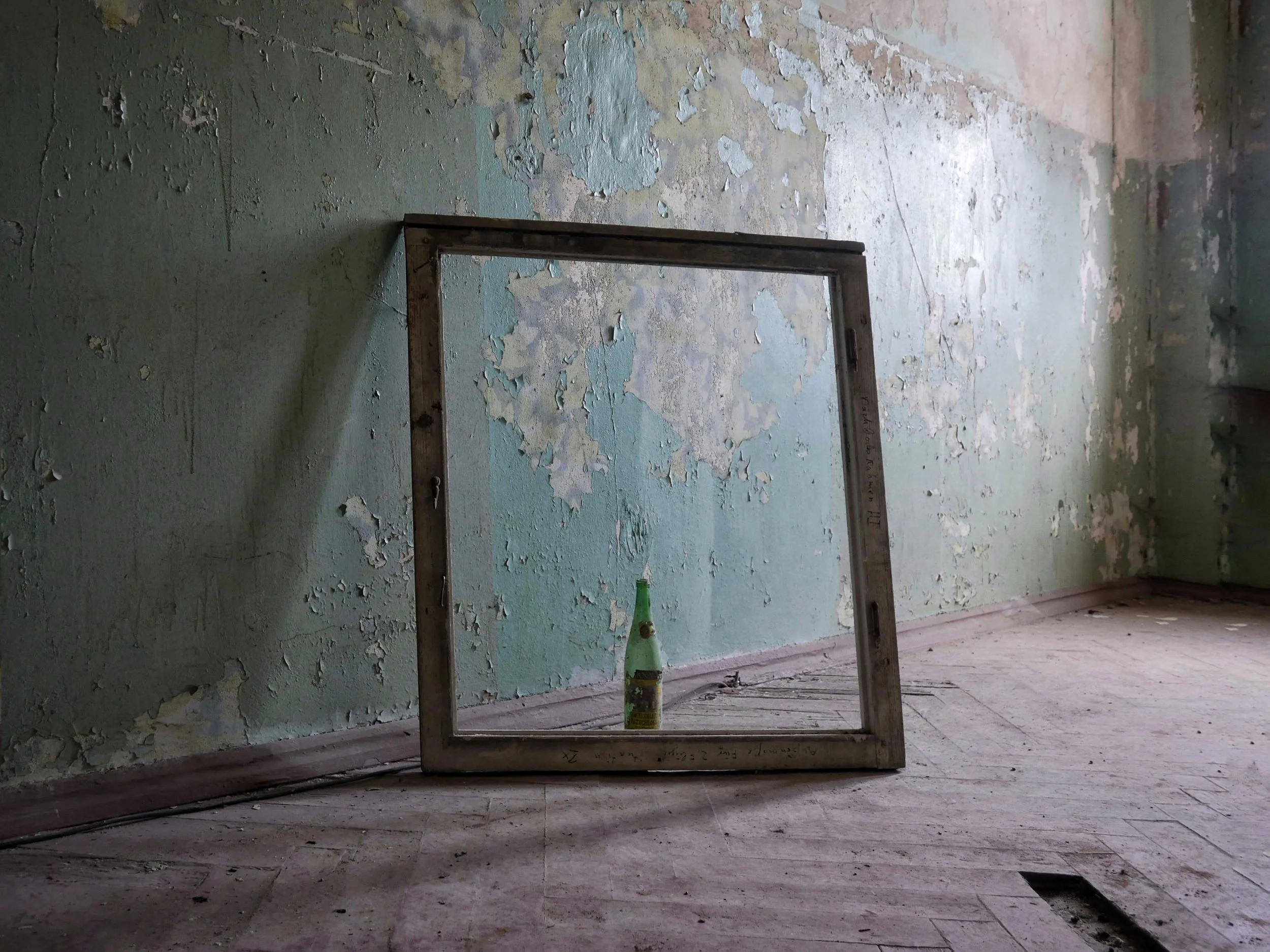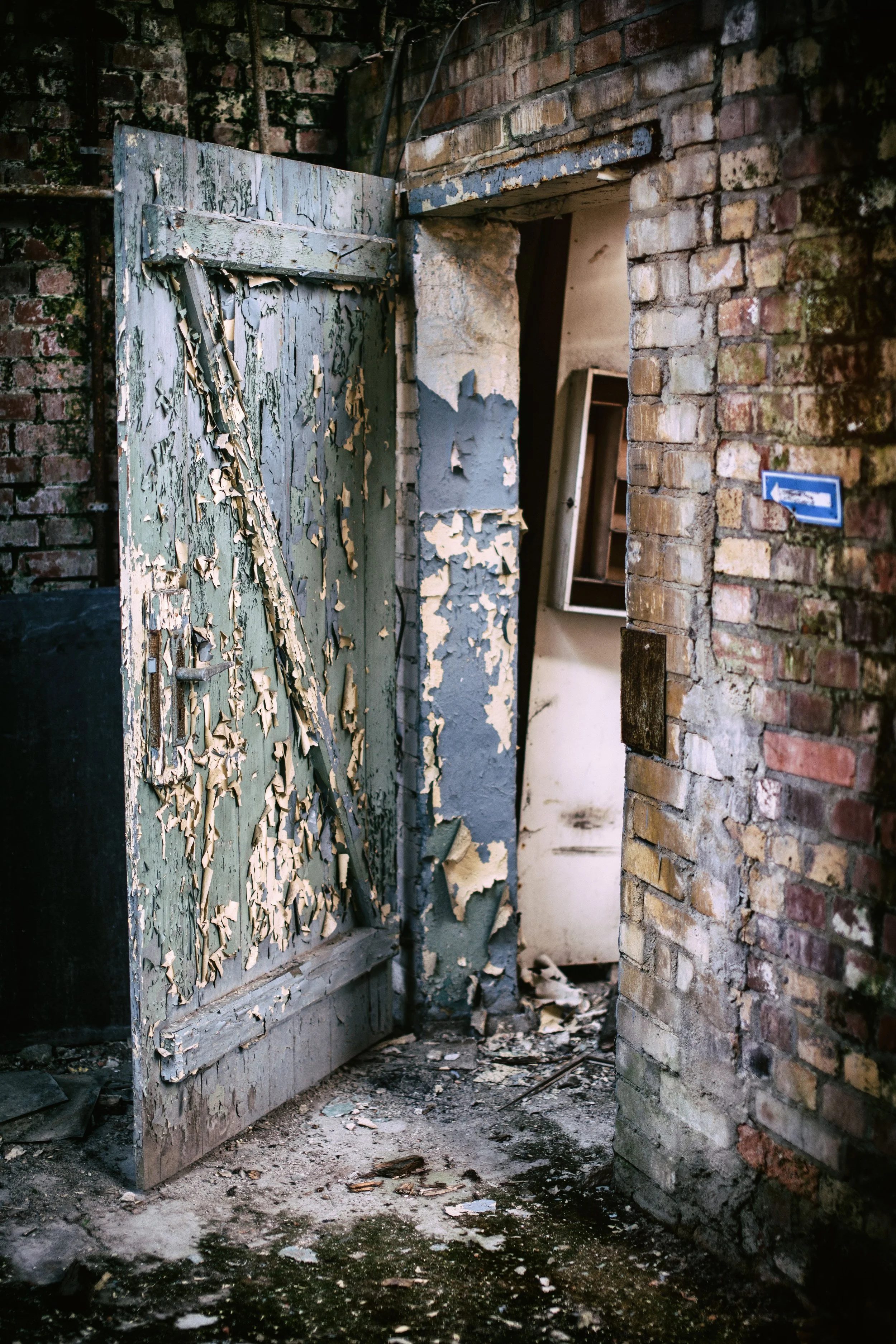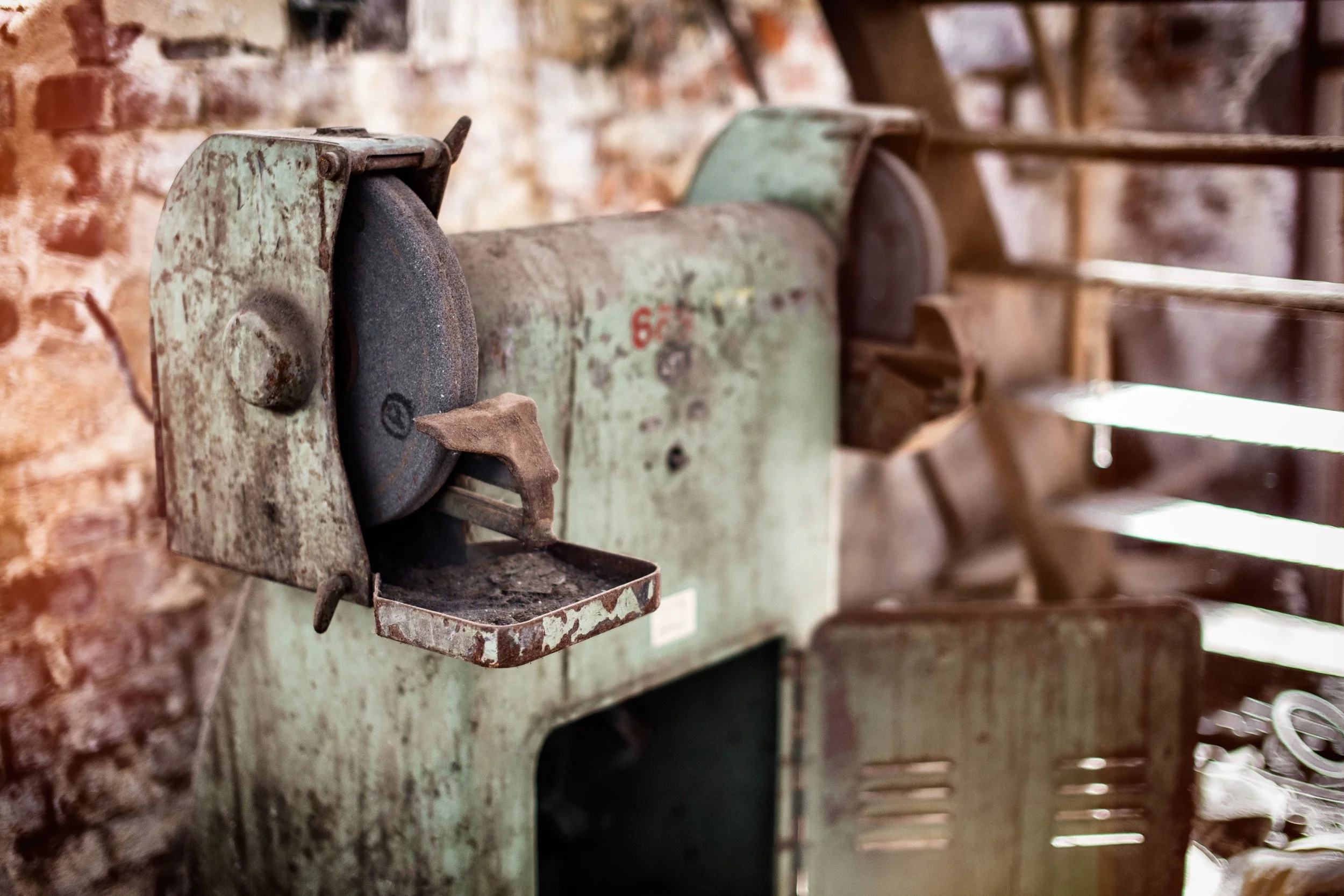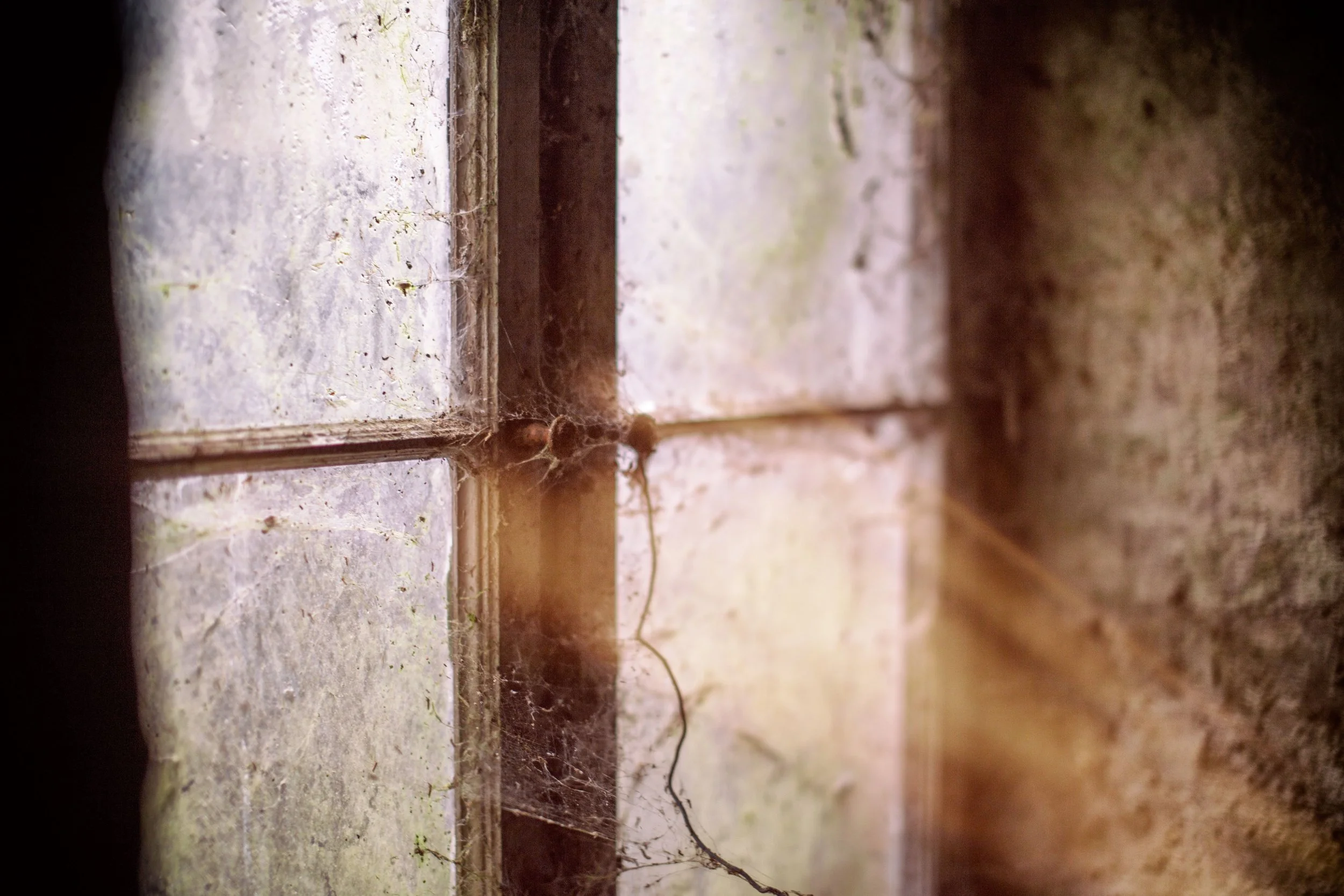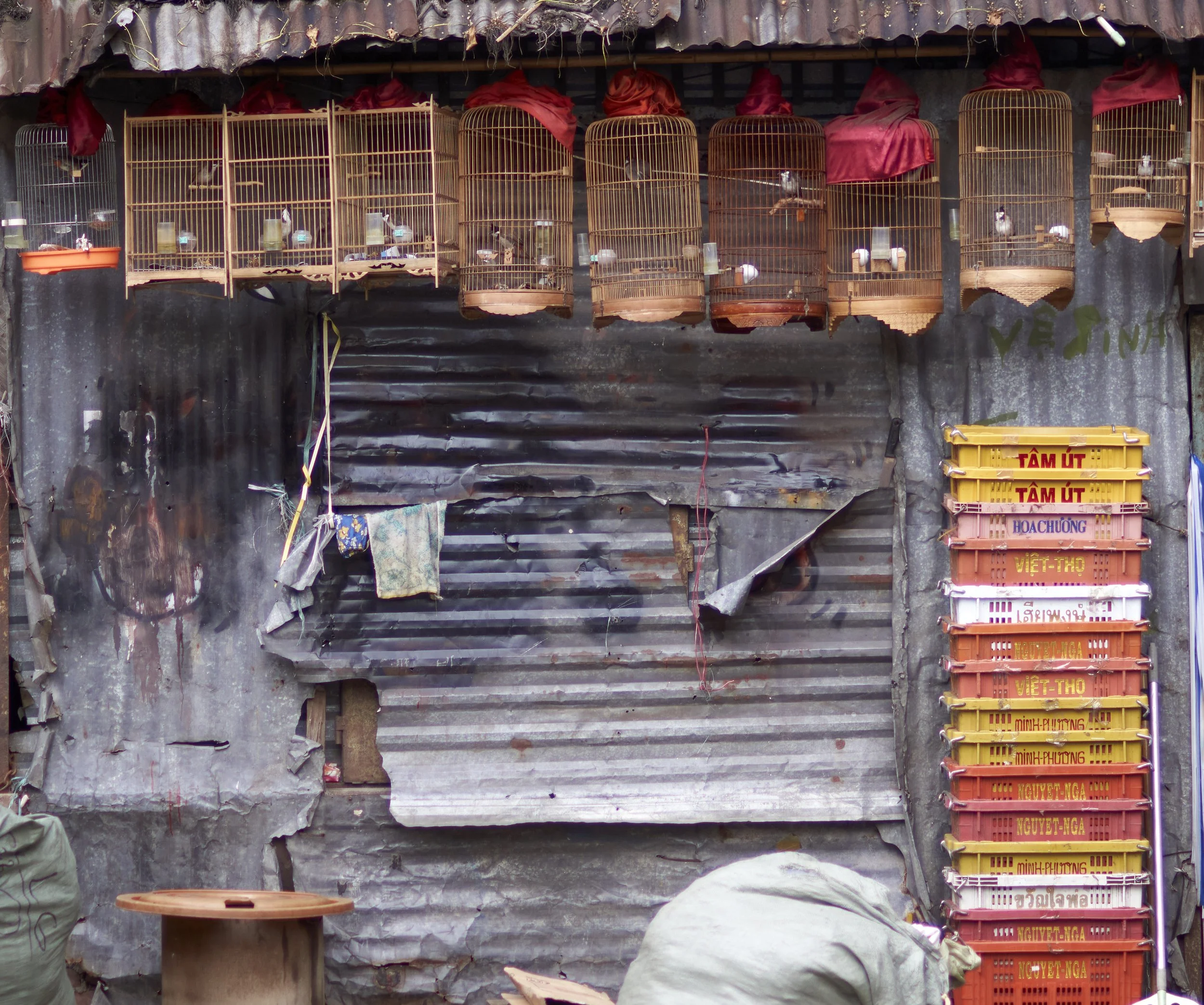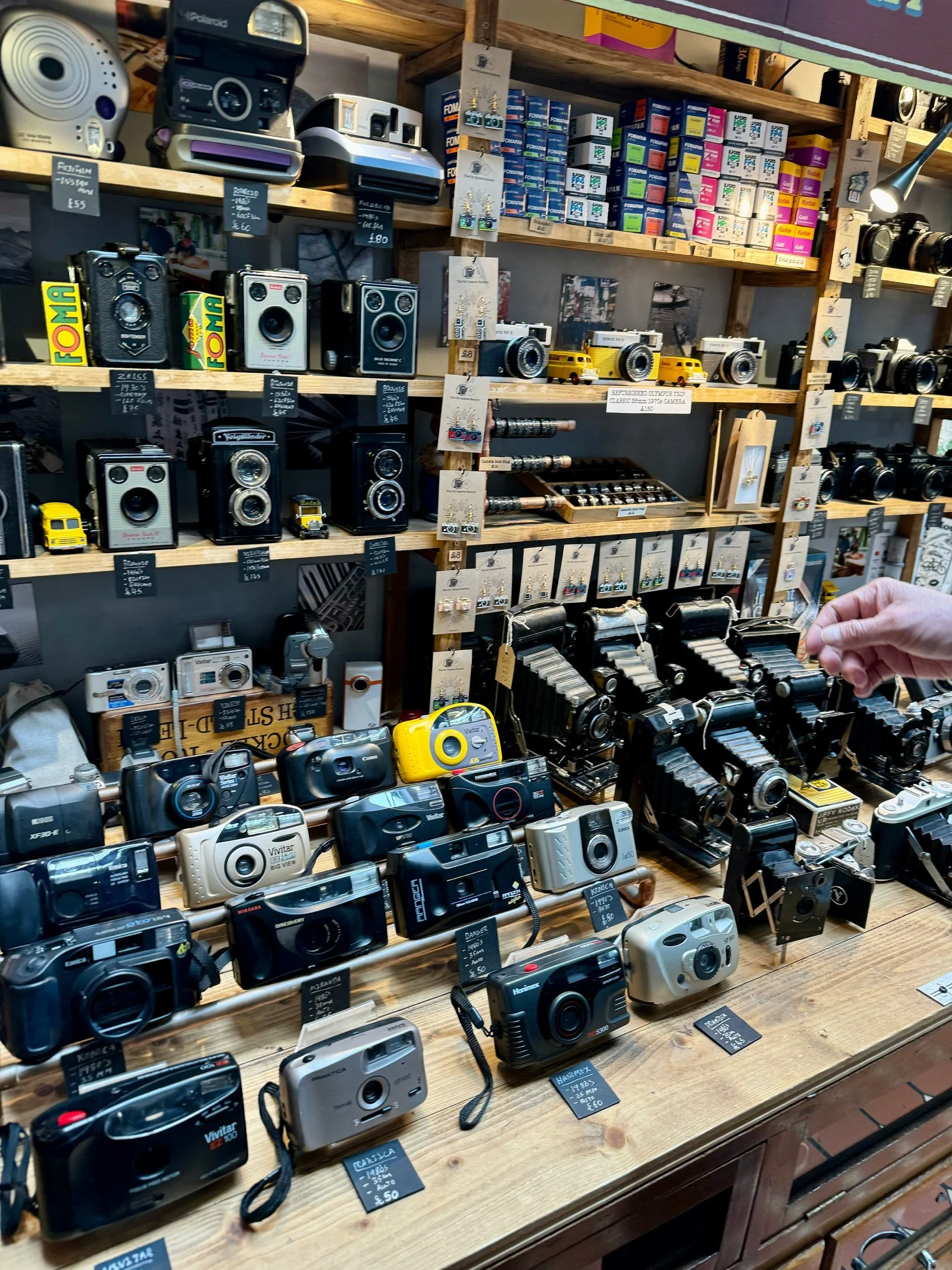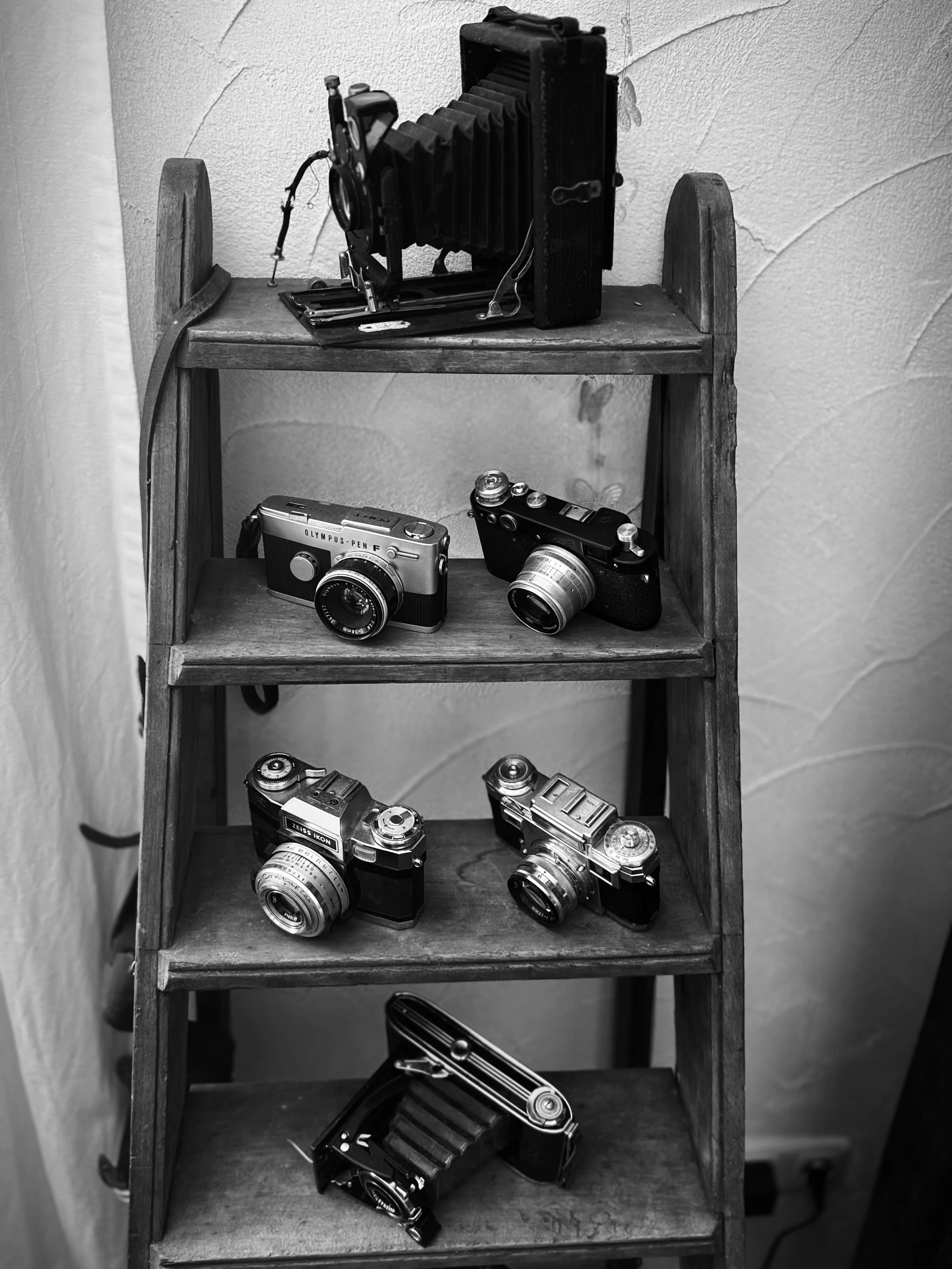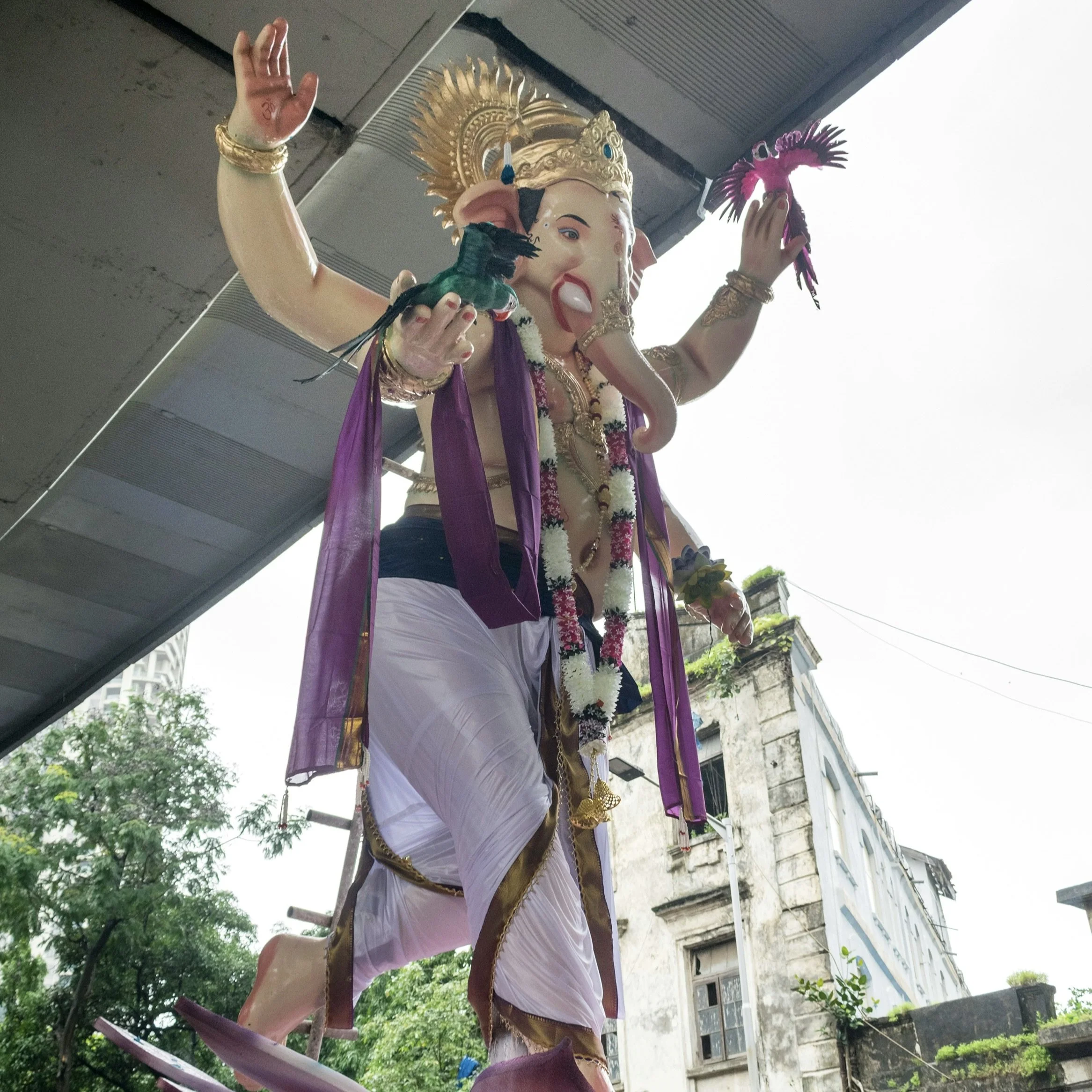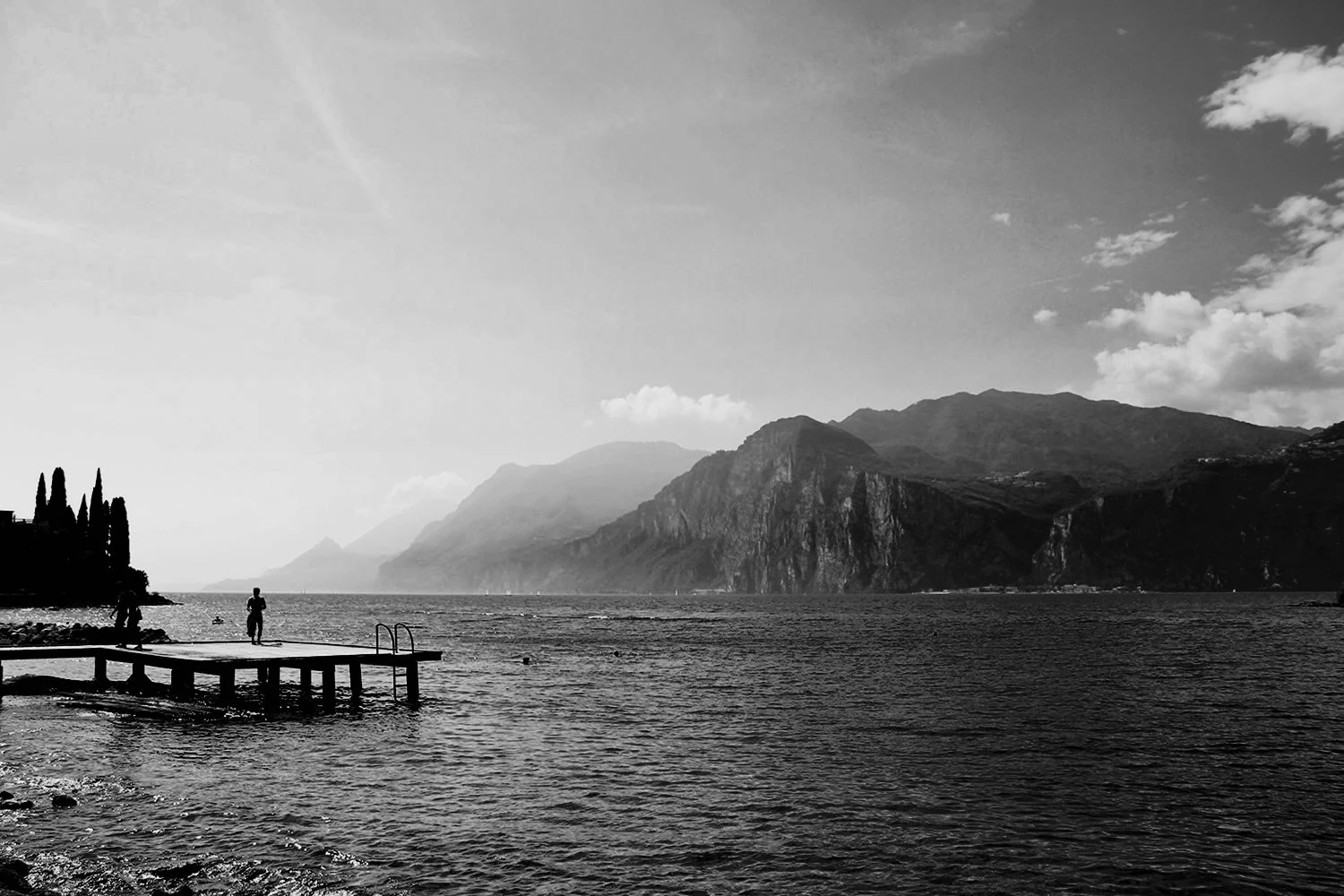The provided text, "Mumbai: Light, Life, and Loops," chronicles a photographer's initial three-month immersion in Mumbai, often referred to as "Maximum City." The author arrives expecting glamour but instead encounters a dynamic urban landscape characterized by relentless heat, chaotic traffic, and profound contradictions. Through personal anecdotes and vivid descriptions, the narrative explores various facets of the city, from the serene vantage point of Malabar Hill to the bustling colonial thoroughfare of Colaba and the hidden heritage of Khotachiwadi. The author's experiences capturing Mumbai's essence are highlighted by the visual challenges of a constantly changing environment, the overwhelming sensory experience of Ganesh Chaturthi, and the architectural and cultural complexities of Fort. Ultimately, the text reveals the photographer's evolving perception of Mumbai, moving beyond initial expectations to appreciate its conviction, resilience, and ceaseless transformation, culminating in the decision to stay.
The evolving nature of photography in the digital age, specifically in the context of AI-generated imagery, and the identity crisis and potential future of traditional photographic practices.
Key Themes:
The Shift from Witness to Prompter: The author highlights a fundamental change in the relationship between the photographer and the image. Historically, a photograph was direct evidence of presence and experience: "Photos used to prove you saw something." In the age of AI, the image can be created through instruction rather than observation: "Now they prove you prompted something." This signifies a growing distance between the creator and the visual output.
The Erosion of Photographic Truth: The piece argues that the clear distinction between the "flawed truth" of photography and the "invented beauty" of painting, which existed in the past, has blurred significantly. The ease and sophistication of digital manipulation and AI generation make it increasingly difficult to discern whether an image depicts a real event or a constructed reality. The author refers to this as the "de-realization of the photographic world," citing William John Mitchell.
The Existential Crisis of Traditional Photography: The author, identifying with analog photographers, describes an "existential tangle" brought on by the rise of AI. Traditional photographers face the dilemma of competing with AI, which is infinitely efficient and tireless, or embracing the inherent imperfections and labor of their craft.
Finding Meaning in Imperfection and Process: The author advocates for the latter, suggesting that the future of traditional photography lies in leaning into its "fragility, texture, and imperfection." This includes the sensory and ritualistic aspects of analog photography, such as "the calm ritual of winding film" and the "good old smell of stop bath." These are elements that AI struggles to replicate authentically.
Photography as Art, Not Just Journalism: The author proposes that photography should shed its historical role as primarily a form of documentation or "journalism" and embrace its potential as a form of creative expression akin to poetry or jazz. This allows traditional photographers to focus on the artistic and subjective aspects of image-making, rather than being solely concerned with literal truth.
The Value of Presence and Witnessing: Despite the ability of AI to simulate aesthetics, the author argues that it cannot replicate the human experience of being present and witnessing a moment. The act of taking a photograph, especially with traditional methods, "demands presence. It still whispers: 'Be here. Look harder. The moment matters.'"
"Scooters, Egg Coffee & the Sound of One Buffalo Mooing"
with Kiribane, Leica M6 in one hand, Hasselblad (digital back, calm down) in the other
In this episode, Kiribane takes us on a gloriously disoriented journey through Vietnam—where existential scooter crossings, lotus-themed cuisine, and mist-drenched coastal roads all converge into one jasmine-scented fever dream. From Hanoi’s organized chaos and egg-based coffee enlightenment to the cinematic switchbacks of the Hai Van Pass, it’s a tale of cultural collision, poetic confusion, and buffalo-induced wonder. Along the way: secret bars, spiritual salads, bullet-scarred bunkers, and a city where fire-breathing bridges are just... normal.
A story best described as beautifully baffling.
Next episode teaser: a Vietnamese haircut. With fire. Yes, really.
The Revival of Analogue Photography as Cultural Heritage in Germany
Date: October 26, 2023
Subject: An analysis of Germany's decision to designate analogue photography as Intangible Cultural Heritage, examining its cultural significance, reasons for its resurgence, and its future implications.
I. Executive Summary
Germany has officially added analogue photography to its national List of Intangible Cultural Heritage, placing it alongside traditions like turnip farming and yodeling. This designation signifies a profound cultural shift, elevating film photography from a niche hobby to a recognized and valued cultural practice. The decision reflects a broader societal embrace of "slowness, craft, and imperfection" in a digitally saturated world. The revival is driven by both nostalgic older generations and younger individuals seeking a more deliberate and authentic creative process. While financially demanding, the status as cultural heritage offers hope for greater support and accessibility, solidifying analogue photography's place as a lasting cultural phenomenon.
II. Key Themes and Most Important Ideas/Facts
1. Official Recognition and Cultural Legitimacy:
Designation: Germany has formally recognized analogue photography as Intangible Cultural Heritage.
"So, it’s official: Germany just gave analogue photography the ultimate compliment—it added it to the national List of Intangible Cultural Heritage."
"Somewhere between turnip farming and yodeling, you’ll now find 35mm film and the faint chemical scent of stop bath."
The "UNESCO world Heritage" source also notes, "Wisco stepped in gave us the knot made it official film ain't just a fat."
Impact: This decision moves analogue photography beyond a "hipster niche" to achieve "cultural legitimacy," becoming "sacred" with "UNESCO’s blessing." This recognition is seen as a "timely reminder that slowness, craft, and imperfection still matter."
2. The "Analogue Boom" – A Resurgence Across Generations:
Growing Popularity: The "analogue boom is no longer a flicker—it’s full exposure. Film sales are soaring, photo labs are overwhelmed, and darkroom gear is selling like hot Glühwein."
Intergenerational Appeal: The revival is not limited to one demographic.
"Young people with Fujica compacts taped up like crime scenes, comparing light leaks like battle scars."
"Their parents are back in the game too. They’re rummaging through dusty boxes labeled 'Ski Trip ’89,' only to emerge triumphantly with a battered Minolta, ready to remind everyone that they used to shoot 'before autofocus was even a thing.'"
This is described as a "genuine intergenerational hobby," where "Teenagers explain ISO to their parents, who counter with tales of push-processing and the day Kodachrome died."
3. The Philosophy of "Slowness" and Deliberate Process:
Counter to Digital Instantaneity: Analogue photography is framed as "the slow food of visual culture." It demands a deliberate, patient approach: "You don’t binge-shoot. You savor. You focus. You meter. You think."
Emphasis on Process: The act of creation is as valuable as the final product.
"The process is as important as the result."
"No preview window no 20 shot burst just patience and sweat and sometimes the worst."
The "UNESCO world Heritage" source emphasizes "36 frames of soul no instant reply just shutter and silence and sky passing by."
Embracing Imperfection and Risk: The lack of instant feedback and the finite nature of film rolls (e.g., "Ten, twelve, maybe thirty-six frames—each one precious. Each one a risk.") cultivate a unique appreciation for each shot, including its flaws.
"All scratches left in for emotional texture."
"You don't need perfection you just need the truth and a bit of that spirit we all lost in youth."
4. The "Wallet Cringe" – Financial Realities:
High Costs: A significant barrier is the expense. "Film costs money. Real money. Portra is now the financial equivalent of French cheese."
Hope for Subsidies: The cultural heritage status brings optimism for future support: "Maybe subsidies will kick in. Maybe we’ll see public darkrooms."
5. Hybridity and the Role of Digital Technology:
Not Luddites: Modern analogue photographers are not anti-digital but rather "hybrid beast[s]—analogue in capture, digital in post."
Digital Facilitation: Digital tools are crucial for the analogue revival. "Without scanners, social media, or YouTube tutorials on how to reload a Canon AE-1, most of us would still be in the dark—literally and figuratively." This allows for film to be shot, scanned, edited slightly, and then shared on platforms like Instagram.
6. Cultural Significance Beyond Photography:
Tangible Connection to History: "Every old camera is back in play from garages and drawers they're seeing the day." This connects individuals to a tangible past and the evolution of technology.
A "Rebels Revival": The "UNESCO world Heritage" source describes it as "a rebels revival in every glow," suggesting a counter-cultural aspect to choosing a slower, more tactile process.
Patience as a Core Value: "It’s united by something rare these days: patience." This highlights the value of analogue photography as a practice that cultivates a desired quality in modern life.
III. Implications for the Future
Increased Support and Infrastructure: The heritage status could lead to more public darkrooms, educational programs, and potentially even subsidies for film and equipment, making analogue photography more accessible.
Continued Growth: The official recognition will likely fuel further interest, solidifying its place as a enduring cultural phenomenon rather than a fleeting trend.
Cultural Preservation: Germany's decision serves as a model for other nations to recognize and preserve practices that embody craft, patience, and a tangible connection to artistic processes in an increasingly digital world.
A Challenge to Manufacturers: The hope is that the increased demand and cultural backing might influence manufacturers like Fujifilm to reconsider discontinuing beloved film stocks.
This excerpt describes a photographer's personal journey through three years of experiencing Ganesh Chaturthi in Mumbai. Initially overwhelmed by the massive festival, the author details their evolving approach to documenting the celebration with specific camera equipment, offering photography tips along the way. The text highlights the festival's sensory intensity and the deep impact of its cultural and spiritual aspects on the author, ultimately suggesting that the vibrant experience surpassed their initial career plans.
"Three Years in Mumbai — Kiribane Photography"
This blog post focuses on the author's experience in Mumbai and India through the lens of photography.
Main Themes:
The vibrant and chaotic nature of Mumbai, described as a "fusion of modernity and tradition."
The diverse landscapes and cultures encountered throughout India.
The power of photography as a tool for cultural understanding and connection.
The transformative and lasting impact of the Indian experience on the author.
Most Important Ideas/Facts:
Mumbai is characterized by "bustling streets, historic landmarks, and the ever-present contrast between the old and the new."
The author used a Hasselblad 500 C/M to capture the essence of Mumbai, employing both black and white and color film to focus on details and textures.
Travels extended beyond Mumbai to diverse regions like Goa, Kerala, and Rajasthan, showcasing India's immense diversity.
The Holi festival was a particularly memorable experience due to its "explosion of colors" and the joy of the people.
Photography served as a "bridge to understanding the depth of India’s culture and the warmth of its people."
The experience in India taught the author "to look beyond the chaos and find beauty in the mundane."
India is not just a place to visit, but an "experience that stays with you, etched in your heart and captured in the frames of memory."
The author emphasizes the power of photography to "transcend language and culture, connecting us to each other and to the world in profound ways."
Quotes:
"Mumbai, a city as vibrant as it is chaotic, where the fusion of modernity and tradition creates a tapestry of life unlike any other."
"Using my trusted Hasselblad 500 C/M, I aimed to capture the essence of Mumbai’s spirit in black and white, as well in color with different film stock, focusing on the intricate details and textures that color can and sometimes cannot convey."
"India, in its entirety, is a country of immense diversity and vibrancy."
"Photography, in many ways, has been my bridge to understanding the depth of India’s culture and the warmth of its people."
"India is not just a place you visit; it’s an experience that stays with you, etched in your heart and captured in the frames of memory."
Riding Reality in a Digital Age"
This briefing synthesizes insights from five interconnected sources detailing an e-bike journey through the Alps to Lake Garda, interwoven with reflections on the changing nature of photography. The core themes revolve around the pursuit of authentic experience, the value of analog processes in a digital world, and the joy of spontaneous human connection.
1. The Epic Journey: Human-Powered (and Electric-Assisted) Adventure:
The central narrative is a demanding yet exhilarating e-bike trip from Hunsrück, Germany, to Lake Garda, Italy. This journey is characterized by physical exertion, stunning landscapes, and a spirit of exploration.
The E-Bike "Savanna": The custom-built Ruffian e-bike, "Savanna," is a recurring motif, described as a "vintage-chic with a modern soul" ("Legs, Leica, and the Ruffian"). She is not just a mode of transport but a trusted companion, "built by Eggy Chrome and steel pride she don't hum she grows and damn she can glide" ("Riva dela Garda"). Her reliability is highlighted by the pre-trip check-up by "Eggi of Halbrenner Galerie" ("Legs, Leica, and the Ruffian").
Physicality and Challenge: The journey is physically demanding, especially the "11 bends up to the Reschenpass" which were "less a road and more a cruel love letter to mountain masochists" ("Legs, Leica, and the Ruffian"). The rider's "lungs full of pain coughing up legends and alpine rain" ("Down from Reschenpass") and "sweat poured like self-doubt" ("Legs, Leica, and the Ruffian") emphasize the effort involved. Despite the struggle, there's a sense of triumph: "I made it to the top – heart pounding, legs burning, ego bruised but still mounted" ("Legs, Leica, and the Ruffian").
"Gentleman Rogue" Mentality: The rider embraces a blend of adventurous spirit and refined demeanor, being a "gentleman rogue in a rolling clashing behind a head" ("Down from Reschenpass") and riding with "swagger and stubborn will" ("Riva dela Garda"). The journey is a "mischievous night a camouflage quest" ("Down from Reschenpass").
Embracing the Unplanned: The trip prioritizes "vibes and views" over strict navigation ("no GPS just vibes and views the wind told stories the saddle sang blues" - "Down from Reschenpass"). This allows for spontaneous interactions and discoveries, such as meeting Signora Marconi.
Article from Kiribane Photography offer advice on how to improve tourist photography by moving beyond common clichés. They suggest that photographers should avoid popular, overdone locations and shots, opting instead for unique perspectives found in overlooked places like back alleys. The author emphasizes the importance of using foreground elements to add depth, shooting from low angles, and waiting patiently for the right moment and light. Ultimately, the sources advocate for photographers to prioritize mood, story, and personal expression over technical perfection and social media validation.
his piece recounts a biking adventure through Luxembourg, focusing on the scenic landscapes and the photographer's experience using a vintage Hasselblad medium format camera, both with traditional film and a modern digital back. It highlights the challenges and joys of shooting with this specific camera in various conditions, offering numerous photographic tips related to film, digital capture, composition, and lighting. The narrative intertwines observations about the environment and companionship with practical advice for photographers interested in exploring similar equipment or locations.






